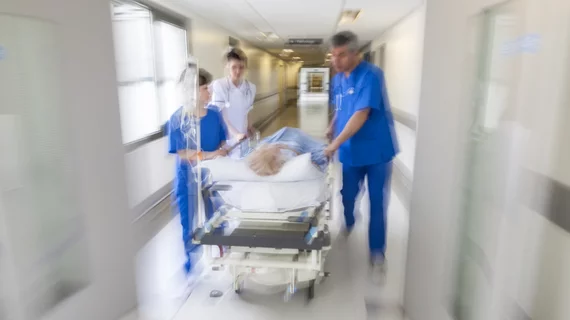What decades of data tell us about stroke rates in the U.S.
The U.S. stroke rate is down among older adults, according to new data to be presented at the American Stroke Association’s International Stroke Conference 2022. Among adults under the age of 50, however, strokes are actually on the rise.
Researchers used data from the Global Burden of Disease study, focusing on trends in cardiovascular health over the last 29 years. From 1990 to 2019, the group found that the overall stroke prevalence within the general U.S. population increased by approximately 60%. Incidence, death and disability-adjusted life years, meanwhile, all increased by approximately 20%.
“Stroke is a growing public health burden in the U.S.,” lead author Audrey C. Leasure, BS, a fourth-year medical student at Yale University School of Medicine in New Haven, Connecticut, said in a prepared statement. “There are about 795,000 new or recurrent strokes each year in the United States, and the economic and healthcare burden of this growing population of stroke survivors has an impact on the nationwide health care infrastructure at every level.”
Leasure et al. also found that age-standardized rates of stroke incidence, death and disability-adjusted life years declined by 20% to 30% over that same 29-year period. In the last decade or so, they added, these decreases have hit a plateau.
The stroke rate among adults 50 years old and older decreased over the course of the team’s analysis. Among patients 49 years old and younger, however, that rate has increased—especially in the South and Midwest.
“Based on our findings, we hope that targeted public health interventions will be considered for younger populations particularly in the regions where stroke incidence is increasing,” Leasure said. “When we think about ways to improve these stroke numbers, we need to develop tailored interventions, because what would work for preventing stroke in older populations may not be the same in younger populations.”
The International Stroke Conference 2022 is scheduled to run from Feb. 8 to Feb. 11. More information is available here.
Related Stroke Imaging Content:
Automated CT scoring system accurately predicts prognosis in stroke patients
New CT protocol uses scout images to expedite stroke patients' path to MRI
What decades of data tell us about stroke rates in the U.S.
Most Americans live within an hour of a stroke center
FDA warns providers about potential misuse of imaging-based software for stroke triage
Radiologists must change their approach to stroke care in the AI era
MRI findings associated with poor thrombectomy outcomes after stroke
Risk of recurrent stroke 48% higher among young marijuana users

